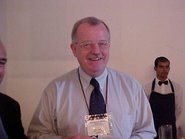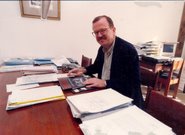 Marketing alternatives to brazilwood. “Why don’t you give us an example how to market alternatives to brazilwood, instead of elaborating about the history of the violin bow!” I must confess the conservation expert who mailed me in reaction to my posting Violinists: a threat to species?, is right. That is more effective indeed. So for the last two days I have been thinking, or better day-dreaming. I tried, but I could not escape history. Now close your eyes and visualize with me the following scene.
Marketing alternatives to brazilwood. “Why don’t you give us an example how to market alternatives to brazilwood, instead of elaborating about the history of the violin bow!” I must confess the conservation expert who mailed me in reaction to my posting Violinists: a threat to species?, is right. That is more effective indeed. So for the last two days I have been thinking, or better day-dreaming. I tried, but I could not escape history. Now close your eyes and visualize with me the following scene.Barcelona 2008, the IUCN World Conservation Congress. A grand piano at one side of the stage, at the other side a table. Behind the table VIPs: the IUCN DG, the mayor of Barcelona, the Secretary General of UNEP, etc. In the middle of the stage is a low table with five different bows. One of Spain’s most popular TV presenters talks about brazilwood and asks questions to the panel. Then he looks into the TV camera and says: “And that ladies and gentlemen, is the reason why we do tonight the Paganini test.”

 He then, explains that the most famous violinist ever, Niccolo Paganini (see drawing by Ingres, below), spent the winter of 1833 in Paris. His violin – a Guarneri, called ‘Il Canone’ - badly needed some repairs, revision and thorough cleaning. So he went to the best violin maker of Paris of that time, Jean-Baptiste Vuillaume. After inspecting the instrument, Vuillaume told him he had to take the violin apart and reassemble it. It would take two months.
He then, explains that the most famous violinist ever, Niccolo Paganini (see drawing by Ingres, below), spent the winter of 1833 in Paris. His violin – a Guarneri, called ‘Il Canone’ - badly needed some repairs, revision and thorough cleaning. So he went to the best violin maker of Paris of that time, Jean-Baptiste Vuillaume. After inspecting the instrument, Vuillaume told him he had to take the violin apart and reassemble it. It would take two months. After two months, Paganini returned to the workshop to pick up his violin. He looked at it from all sides, weighed it in his hands, touched the strings and nodded approvingly. Then to his surprise, Vuillaume produced another violin, completely identical. “I am sorry, but this is your instrument: the original Canone. My apologies, I have taken the liberty to make a copy”. Paganini could not believe it. He played both violins and only after playing for some time, he could identify the original. “I will buy the replica” he said. “No maestro, let it be my gift to you”, Vuillaume answered. Years later Paganini gave the copy to his only student Camillo Sivori. Both violins (left Il Canone, right the replica) still exist. I saw them in the Municipal Palace of Genua (Italy).
 “Now”, the TV presenter says, “we are going to do a similar Paganini test with bows: I have here five bows, one from brazilwood and four alternative bows. Conservation guests on the podium, you the audience in the hall: you all can vote with your voting machine. Viewers of the program at home, can vote by sending us an sms. The violinist who is going to play for you, also does not know which bow is made of brazilwood”.
“Now”, the TV presenter says, “we are going to do a similar Paganini test with bows: I have here five bows, one from brazilwood and four alternative bows. Conservation guests on the podium, you the audience in the hall: you all can vote with your voting machine. Viewers of the program at home, can vote by sending us an sms. The violinist who is going to play for you, also does not know which bow is made of brazilwood”.Then the Russian master violinist, Maxim Vengerov, enters the stage. He picks up a bow, shows it to the camera and public and plays the 24th Caprice by Paganini. Silent voting. Another piece by Spanish composer Lalo. Voting, and so on. After five pieces, the results of the voting are made public. The VIPs are asked to motivate their votes. Then the anchor asks the violinist. He hesitates between two bows and asks: “you are sure that there is only one brazilwood bow?” “Yes”, the anchor says. The final choice of Maxim Vengerov is wrong. He tells the audience that he will be an ambassador for the protection of brazilwood and lobby for the use of alternatives. The IUCN DG presents him with all five bows.
The next day, pieces of the TV show are broadcasted on other European channels and the printed press interviews Maxim Vengerov, IUCN specialists and producers of alternative bows. E-mailing music schools all over the globe on how to download the video, follows. TV stations in France and Italy organize their own Paganini test. Other famous violinists make public statements. IUCN and the bow makers associations in Europe, America and elsewhere monitor the demand for the various bows; IUCN is praised by UNEP and CBD for the real impact it has made in the market place, and so on, and so forth. Then I wake up from my reverie!!!









No comments:
Post a Comment